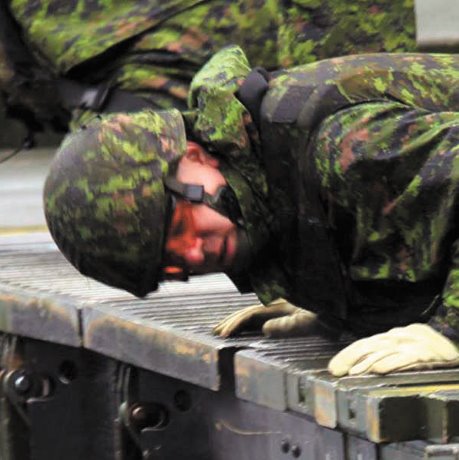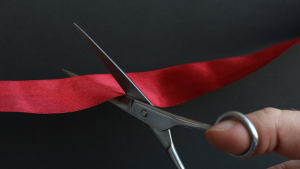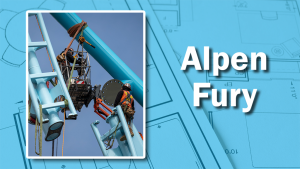Reserve combat engineers hit the refresh button on their bridge and raft building skills during Exercise Paladin Response, where they were tasked with hauling equipment on difficult terrain and in the water in preparation for potential missions.
Hosted by the 39 Combat Engineer Regiment, more than 185 soldiers from across the country took part in the training exercise, held at the 3rd Canadian Division Support Group Detachment in Chilliwack, B.C. at the end of December.
"Training exercises such as Paladin Response are significant because our job as reservists is to keep current with our skills so that we may augment the regular force (full-time military) when needed," explained Master Cpl. Jennifer Labrador, an army reserve recruiter at 39 Canadian Brigade Group Headquarters and a reserve combat engineer.
"It’s to refresh the engineers’ skills and to re-familiarize themselves because, just like all skills, if you don’t practice, it will fade. Without this training, we would be exposed to a large gap of ‘skill-fade’ and then become inadequate and ill-prepared within our area of operation."
The purpose of the exercise was to develop the core skill of gap crossing which is critical in order to provide mobility support for the Canadian Army.
Reserve Force Combat Engineers have a particular focus on supporting domestic operations, such as natural disaster response, where they may be asked to provide assistance to provincial and territorial authorities.
Three types of bridge assembly were carried out during the exercise — the medium raft/medium floating bridge, the medium girder bridge and the Acrow Bridge. These types of exercises are conducted frequently by the military.
The bridges are built mechanically using human power and with the assistance of heavy equipment and motorized boats, Labrador explained.
Some things that are taken into consideration at the site are the physical location of the bridge, the width of the gap and ensuring the ground is stable enough to support the bridge.
To build the medium floating bridge, pieces are loaded onto a truck that gets lowered into the water. The pieces then expand and troops waiting on the water with motorized boats climb on and connect the pieces to make one large floating raft.
"Once these pieces have been locked in and secured together, that’s when they can launch the raft onto land and then vehicles can get on top and get ferried over to the other side," Labrador explained.
With the medium girder bridge, the builders are organized by height. Each panel requires a four-man lift. The top panel party, comprised of the tallest participants, is in charge of getting higher panels attached and put together, while shorter participants are responsible for bracing and putting in the pins to make sure all the pieces stay together, Labrador said.
Due to its unique design, an Acrow Bridge, a prefabricated, modular steel bridge, was used in this most recent exercise. The Acrow bridge design is similar to the Bailey Bridge, invented in 1943 for military application, but the two are not the same and they are not compatible.
"When a bridge is destroyed, you need to replace it very fast and this is why they invented this kind of bridge," said Benoit Forget, Quebec regional director at Acrow Canada. "Even today we are using that bridge because there are several armies around the world who are buying that bridge, so when there is a conflict somewhere in the world they will deploy those bridges to install them so they need to train themselves with this kind of bridge."
The Acrow panels are larger and heavier than the other bridges and require a six-man lift, Labrador pointed out.
"This bridge in particular is something we would not want to take with us into battle because it is much heavier and the bridge design is for something more permanent and stable," Labrador stated. "The medium girder bridge is something that we would take into battle because it’s something that we can build as a team and take apart and put together within a matter of hours."
According to Labrador, the first day of the exercise can be a challenge because everyone is familiarizing themselves with the equipment, the environment and each other.
"You have engineers from across Canada, some you’ve never worked with," Labrador said. "The first day is usually the day to ‘shake out the cob webs,’ so to speak…get into the rhythm of how things work and how things flow. Everything that did not go according to plan or that did not work the first time around is mediated the night before the second day. The second day is where the process of bridge building goes considerably faster and smoother because the issues at hand were resolved."
To learn more about military construction and engineering training exercises that are being conducted across Canada, read this article in the Daily Commercial News. The exercises are meant to ensure Canadian Armed Forces engineers and reserve force combat engineers are ready to serve the country by building the necessary infrastructure required for military operations at home or abroad.

1/4
Reserve combat engineers were given hands-on training in bridge building during Exercise Paladin Response, which took place in Chilliwack, B.C. at the end of December. The medium raft or medium floating bridge is assembled on water and once the pieces are secure it can be used to ferry large military vehicles from the water to land
Photo: Sergeant Greg Gorecki/41 COMBAT ENGINEER REGIMENT
2/4
Photo: Sergeant Greg Gorecki/41 COMBAT ENGINEER REGIMENT
3/4
Photo: Sergeant Greg Gorecki/41 COMBAT ENGINEER REGIMENT
4/4
Exercise Paladin Response involved building three types of bridges including an Acrow Bridge











Recent Comments
comments for this post are closed